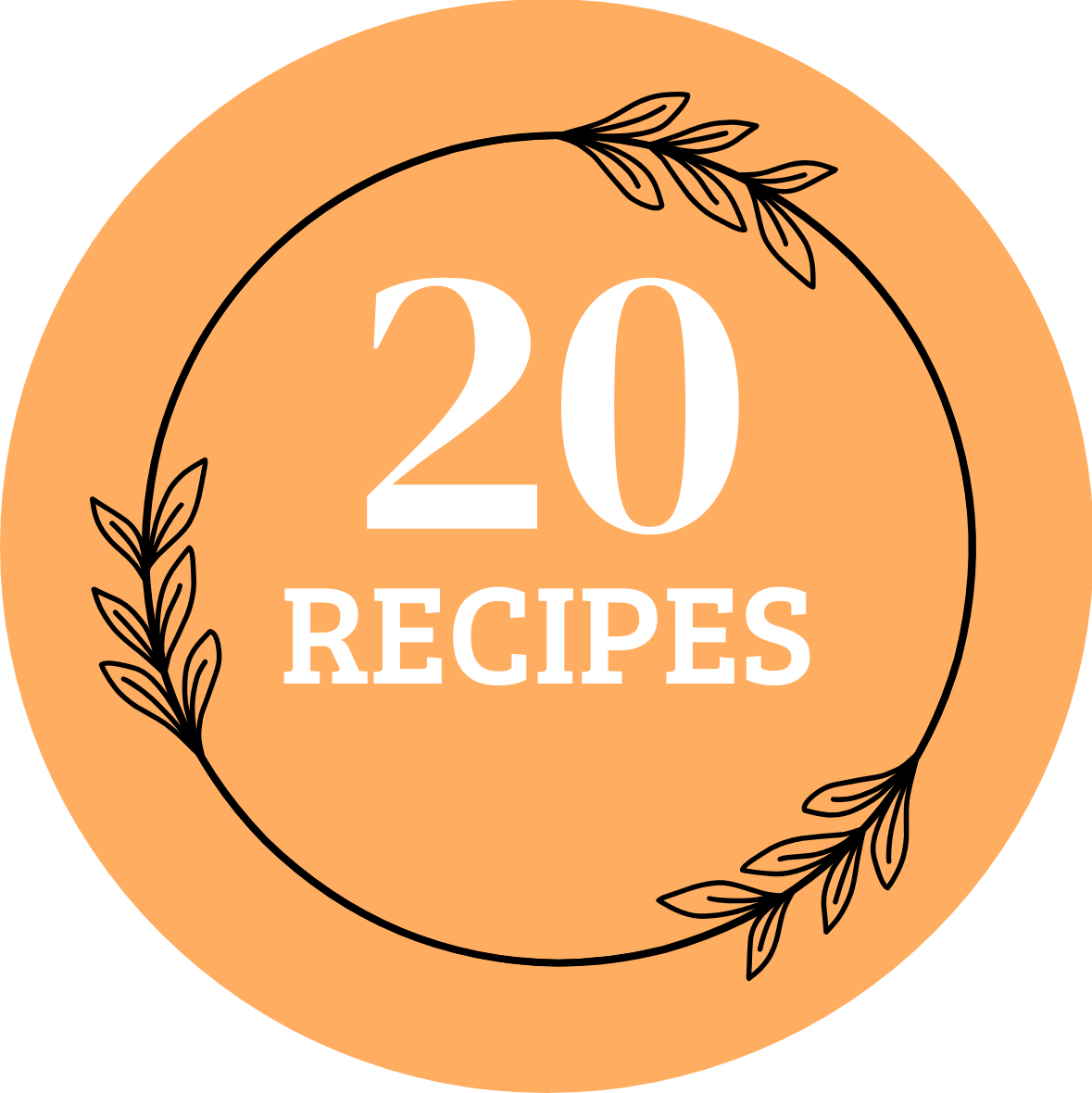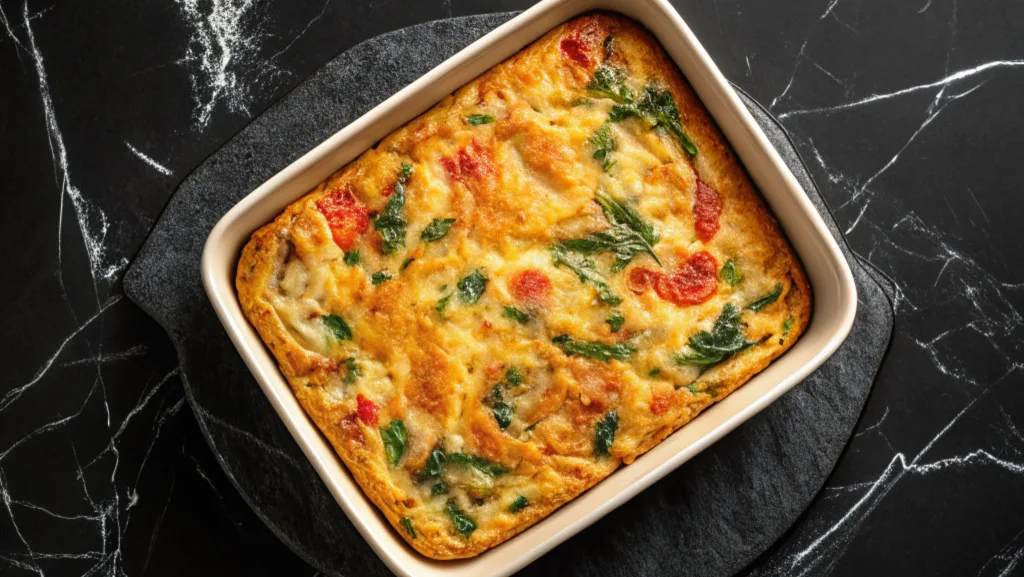Why Choose a Gluten-Free Breakfast Casserole?
 A gluten-free breakfast casserole is a perfect dish for anyone seeking a hearty, nutritious, and easy-to-make meal. Whether you’re following a gluten-free diet for health reasons or simply want a tasty breakfast option, this recipe offers flexibility and flavor.
A gluten-free breakfast casserole is a perfect dish for anyone seeking a hearty, nutritious, and easy-to-make meal. Whether you’re following a gluten-free diet for health reasons or simply want a tasty breakfast option, this recipe offers flexibility and flavor.
According to the Celiac Disease Foundation, removing gluten from your diet can improve digestion and overall well-being. If you’re interested in gluten-free dinner options, check out this recipe for gluten-free lasagna for a perfect complement to your weekly meal plan.
Key Ingredients for Gluten-Free Breakfast Casseroles
Creating a gluten-free breakfast casserole starts with selecting wholesome, high-quality ingredients that deliver flavor, texture, and nutrition. Here’s a breakdown of the essential components:
Base Ingredients:
- Eggs – Packed with protein, vitamins, and healthy fats, eggs form the foundation of the casserole, providing structure and a creamy texture.
- Milk Alternatives – For a dairy-free option, choose almond, oat, coconut, or cashew milk. These add creaminess without lactose or dairy, catering to dietary preferences.
- Gluten-Free Bread or Potatoes –
- Use gluten-free bread cubes for a fluffy, bread-pudding-like texture. Opt for varieties made from rice flour or almond flour.
- Alternatively, potatoes (diced or shredded hash browns) create a heartier, more traditional base. For low-carb diets, substitute cauliflower rice.
Protein Options:
- Chicken Sausage or Turkey Sausage – Lean, flavorful, and high in protein, these options provide a hearty bite while keeping the dish lighter.
- Ground Turkey or Chicken – Adds a savory, meaty flavor without pork products.
- Plant-Based Options – For a vegetarian-friendly version, use tofu crumbles or plant-based sausage. These ingredients mimic traditional textures while offering a gluten-free and meat-free alternative.
Vegetables and Add-Ins:
- Leafy Greens – Spinach, kale, or Swiss chard add color, flavor, and nutrients like iron and fiber.
- Savory Vegetables – Add mushrooms, bell peppers, zucchini, onions, and tomatoes for a burst of flavor and texture.
- Herbs and Spices – Fresh herbs like parsley, thyme, and chives add aroma and brightness. Seasonings such as garlic powder, paprika, onion powder, and cumin enhance flavor.
Step-by-Step Recipe for Gluten-Free Breakfast Casserole
Ingredients:
- 8 large eggs
- 1 cup milk or dairy-free alternative
- 1 pound sausage (or vegetarian substitute)
- 1 cup cheddar cheese, shredded
- 2 cups potatoes (hash browns or diced)
- 1 cup spinach, chopped
- 1 bell pepper, diced
- 1 small onion, finely chopped
- 1 tsp garlic powder
- 1/2 tsp paprika
- Salt and pepper to taste
Instructions:
- Preheat Oven: Set to 375°F and grease a 9×13-inch baking dish.
- Cook Proteins and Veggies:
- Brown the sausage and drain excess fat.
- Sauté onions, peppers, and spinach.
- Layer Ingredients:
- Spread potatoes in the dish.
- Add cooked sausage and vegetables.
- Sprinkle cheese evenly.
- Whisk Eggs:
- Beat eggs with milk and seasonings.
- Bake:
- Pour the egg mixture over the layers.
- Bake for 35–40 minutes until set and golden.
Variations and Customizations
One of the best features of a gluten-free breakfast casserole is its flexibility. Whether you prefer meat-packed, vegetarian, dairy-free, keto, or vegan options, this dish can be tailored to suit your dietary preferences. Below are some creative variations and customizations to inspire you:
1. High-Protein Option (Meat Lovers’ Style):
For those who crave a protein-packed breakfast, this variation is loaded with lean meats:
- Use chicken sausage or turkey sausage instead of pork-based options.
- Add shredded rotisserie chicken or ground turkey for additional protein.
- Incorporate a sprinkle of crumbled feta or parmesan cheese for added flavor.
- Include egg whites alongside whole eggs for an extra protein boost.
2. Vegetarian Delight:
Perfect for meat-free diets, this version is rich in vegetables and plant-based protein:
- Replace meat with a combination of mushrooms, zucchini, bell peppers, and spinach.
- Add plant-based sausage crumbles or tofu for extra protein.
- Mix in roasted sweet potatoes for sweetness and fiber.
- Top with nutritional yeast or dairy-free cheese for added flavor.
3. Dairy-Free Version:
This variation caters to those who are lactose-intolerant or dairy-sensitive:
- Swap regular milk with almond, oat, or coconut milk.
- Use dairy-free cheese blends available in most grocery stores.
- Enhance flavor with nutritional yeast, which provides a cheesy, nutty taste.
- Add avocado slices on top for creaminess without dairy.
4. Keto-Friendly Low-Carb Option:
Ideal for those following a low-carb or keto diet, this version cuts carbs without sacrificing flavor:
- Replace potatoes with cauliflower rice or broccoli rice.
- Load up on meat, eggs, and cheese for healthy fats and protein.
- Use low-carb vegetables like spinach, asparagus, and zucchini.
- Sprinkle with parmesan or cheddar for extra richness.
5. Vegan Twist:
For those avoiding animal products, this vegan-friendly version is flavorful and satisfying:
- Replace eggs with a tofu scramble seasoned with turmeric for color and flavor.
- Use plant-based milk and dairy-free cheese for creaminess.
- Add hearty veggies like mushrooms, broccoli, and kale.
- Include chickpeas or lentils for additional plant-based protein.
6. Mediterranean-Inspired Casserole:
For a flavorful, Mediterranean-style twist:
- Use sundried tomatoes, spinach, and kalamata olives.
- Add crumbled feta cheese or a dairy-free Greek-style alternative.
- Sprinkle oregano and basil for a burst of flavor.
7. Southwest Spicy Style:
Add a kick of heat with bold spices and Tex-Mex flavors:
- Include jalapeños, black beans, corn, and chili powder.
- Top with avocado slices, salsa, and cilantro.
- Sprinkle pepper jack cheese or a vegan spicy cheese alternative.
8. Breakfast-for-Dinner Casserole:
Transform your breakfast casserole into a satisfying dinner option:
- Add chopped rotisserie chicken or ground turkey.
- Pair with a side salad or roasted vegetables for a complete meal.
- Try adding quinoa for extra protein and fiber.
Looking for More Casserole Inspiration?
For another casserole idea, check out this simple and tasty hashbrown casserole recipe that’s also gluten-free! It’s perfect for potlucks, holiday brunches, or meal prepping!
Expert Tips for Perfect Casseroles
Preparing a gluten-free breakfast casserole can be simple and stress-free with the right techniques. Follow these tips to ensure your casserole turns out flavorful, firm, and perfectly baked every time.
1. Avoid Sogginess:
Nothing ruins a casserole faster than a soggy texture. Keep it firm and delicious with these tips:
- Drain Moisture from Vegetables: Pre-cook watery vegetables like spinach, zucchini, and mushrooms to release excess water before adding them to the dish.
- Use Pre-Cooked Ingredients: Cooking meats, such as chicken sausage or ground turkey, ahead of time prevents unwanted moisture buildup.
- Blot Ingredients Dry: Pat down cooked vegetables and meats with a paper towel to remove any residual moisture.
- Choose Firm Bases: Use gluten-free bread that holds its texture when baked, or potatoes that have been lightly roasted for added crispness.
2. Master the Layering Technique:
Proper layering is key to creating a sturdy and evenly cooked casserole:
- Start with a Solid Base: Place potatoes, gluten-free bread cubes, or cauliflower rice at the bottom to form a strong foundation that absorbs moisture and supports other layers.
- Layer Ingredients Evenly: Spread vegetables, meats, and cheese evenly to ensure consistent flavors in every bite.
- Seal with Eggs: Pour the egg mixture slowly and evenly over the layers to bind the ingredients together. Allow the mixture to seep into all gaps for a cohesive texture.
3. Ensure Even Baking:
Perfect baking prevents undercooked centers and overcooked edges:
- Preheat the Oven: Start with a preheated oven at 375°F to ensure even cooking.
- Cover with Foil Initially: Bake covered for the first 20 minutes to allow the casserole to cook evenly without drying out.
- Finish Uncovered: Remove the foil and bake uncovered for the remaining time to create a golden, crispy top.
- Test for Doneness: Insert a knife into the center—if it comes out clean, the casserole is done. If it’s slightly runny, bake for an additional 5–10 minutes.
4. Enhance Flavor and Texture:
Take your casserole to the next level with these tips:
- Add a Crunchy Topping: Sprinkle gluten-free breadcrumbs or crushed tortilla chips on top before baking for added crunch.
- Boost Flavor with Spices: Season each layer with spices like garlic powder, paprika, and onion powder to ensure every bite is flavorful.
- Finish with Fresh Herbs: Add parsley, cilantro, or basil after baking for a burst of freshness.
Storage and Meal Prep Tips
A gluten-free breakfast casserole is perfect for meal prep, allowing you to save time while enjoying a healthy, delicious breakfast throughout the week. Follow these tips to store, freeze, and reheat your casserole while maintaining its flavor and texture.
1. Refrigeration (Short-Term Storage):
- Cooling Before Storing: Let the casserole cool completely before storing to prevent condensation, which can lead to sogginess.
- Airtight Containers: Transfer portions into airtight containers to keep the casserole fresh for up to 4 days in the refrigerator.
- Portion Control: Cut the casserole into individual servings before refrigerating for quick grab-and-go breakfasts.
2. Freezing (Long-Term Storage):
- Freeze in Portions:
- Slice the casserole into portions to make it easier to thaw and reheat only what you need.
- Wrap Securely:
- Wrap each piece tightly in plastic wrap or foil to prevent freezer burn.
- Place the wrapped portions into a zip-top freezer bag or an airtight container.
- Label and Date:
- Write the freezing date on the container to track freshness.
- Casseroles can be frozen for up to 3 months without compromising taste or texture.
- Thawing Tips:
- Thaw overnight in the refrigerator or heat directly from frozen with slight adjustments in reheating time.
3. Reheating Tips:
- Microwave (Quick Option):
- Heat single servings for 1–2 minutes until warmed through.
- Cover with a damp paper towel to retain moisture.
- Oven (Best Texture):
- Preheat oven to 350°F and bake for 15–20 minutes until heated evenly.
- Cover with foil if reheating a large portion to prevent drying out.
- Air Fryer (Crispy Finish):
- Reheat at 350°F for 5–8 minutes for a crispier texture.
4. Meal Prep Tips:
- Make Ahead:
- Assemble the casserole the night before and refrigerate it uncooked. Bake it fresh the next morning for maximum flavor.
- Bake and Store:
- Fully bake the casserole, then divide it into portions and store for quick breakfasts throughout the week.
- Customize for Freezing:
- Use dairy-free cheeses or plant-based milks for better freezing results if you’re avoiding dairy.
FAQs – People Also Ask
- Can I make a gluten-free casserole ahead of time?
- Yes, prepare it the night before, refrigerate, and bake the next morning.
- What are the best gluten-free bread options?
- Look for gluten-free breads made from rice flour or almond flour.
- How do I know if my sausage or bacon is gluten-free?
- Check for certified gluten-free labels and avoid cross-contamination.
- Can I freeze a gluten-free breakfast casserole?
- Absolutely! Freeze either before or after baking.
- Are gluten-free casseroles healthy?
- Yes, especially when packed with vegetables and lean proteins.
Conclusion
A gluten-free breakfast casserole is the ultimate combination of taste, health, and convenience. It’s ideal for busy mornings, holiday brunches, or meal-prep enthusiasts.
If you’re in the mood for more gluten-free dishes, you’ll love this zesty pineapple casserole recipe—a sweet and savory delight for any occasion!
Try this recipe today and discover how gluten-free eating can be both easy and delicious!


